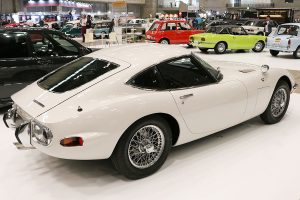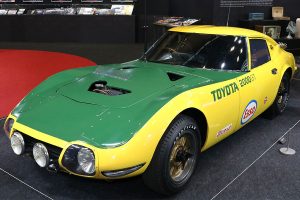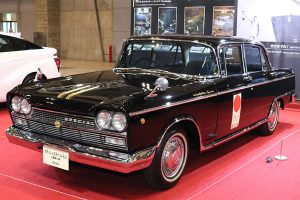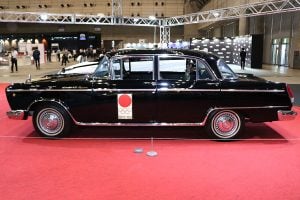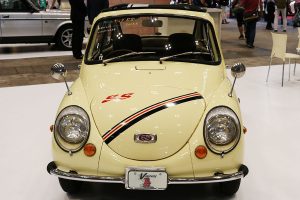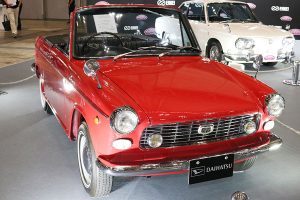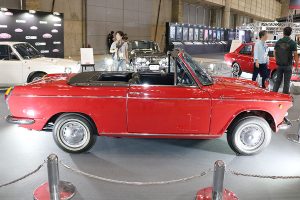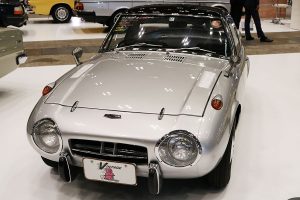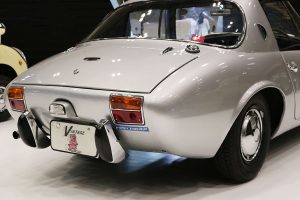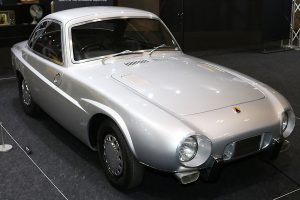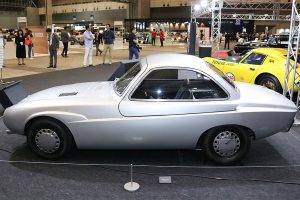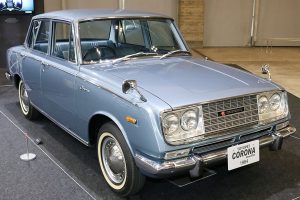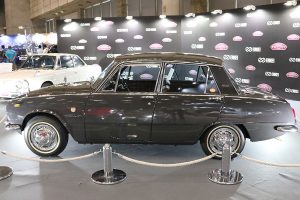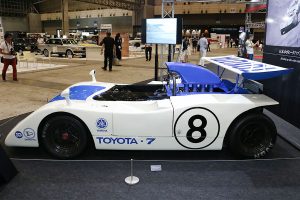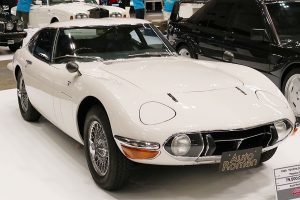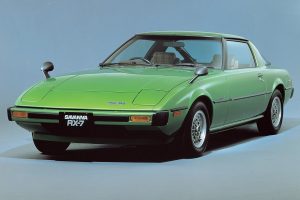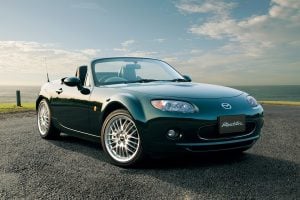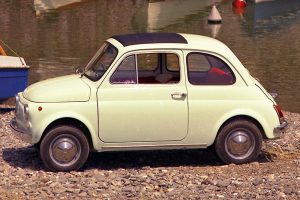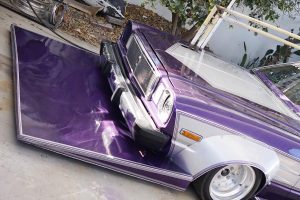More attractive cars from the late-60s
Daihatsu Compagno Spider (1965)

Daihatsu introduced the Compagno Spyder in Spring 1965. The 4-seater compact convertible was based on the commercial Compagno Van, which was developed on an extended frame from the 1963 Hijet, another light commercial van.
The engine was enlarged from the Compagno Sedan’s 797 cc to a 958 cc and equipped with twin Solex carburetors. But compared to other sports compacts such as the Toyota Sport 800 or the Honda S600, the Compagno Spider didn’t see any huge success because of the heavy body based on a commercial chassis.
Nevertheless, with its Italian-inspired design and the ability that could seat four people, the car was clearly different from its rivals, and although it was sold for only three years, it still has many fans. And just by seeing the characteristics, you can start to think the Compagno Spider could be thought of as an ancestor of today’s Daihatsu Copen.
Toyota Sports 800 (1965)
In 1965, Toyota launched the Sports 800, a 2-seater targa top that was developed using major components of the Publica compact.
Its rival was Honda’s S-series in the world of motorsports, but while the Honda counterpart was a convertible, the Sports 800 had an advantage with its lightweight targa top body. In fact, the S600 weighs 695 kg (1532.2 lbs.), which is 115 kg (253.5 lbs.) heavier than the Toyota coupe. Although the Sports 800 had a weak engine derived from the Publica, with its aerodynamic characteristics based on the same technology as a fighter plane, the car’s overall performance was equal with those from the Honda S-series.
By the way, the second half of this video also features the Publica Sport (a replica made by Toyota itself), which was exhibited at the 1962 All Japan Auto Show. This concept car is said to have been the prototype for the Sports 800.
Toyota Corona (1964)
To win the sales battle against Nissan’s Bluebird, Toyota launched the third generation Toyopet Corona in 1964. The battle between the two cars was called the “BC War”, named from each car’s initials.
Comparing to the American-styled previous model, the third generation “T40” model had a slanted front end with four square-shaped headlights. For its performance, the car had a top speed of 140 km/h (87 mph) and even conducted an endurance test of driving 100,000 km (62137 miles) on the newly opened Meishin Expressway. This car advertised the dawn of the “Highway Era” in Japan.
In 1965, one year after the launch, sales for the Corona overtook the Bluebird, which has been the top-selling car in Japan for a long time, with a sports model being added.
A 90 ps 4R 1.6-liter engine with twin SU carburetors was selected for the 1600S sports model. Other exclusive features include a tachometer and front disc brakes. In addition to that, Toyota also added a 2-door pillarless hardtop model and also 1600GT model that came with a 9R 1.6-liter DOHC engine. This made the battle between Corona and Bluebird further intensify.

